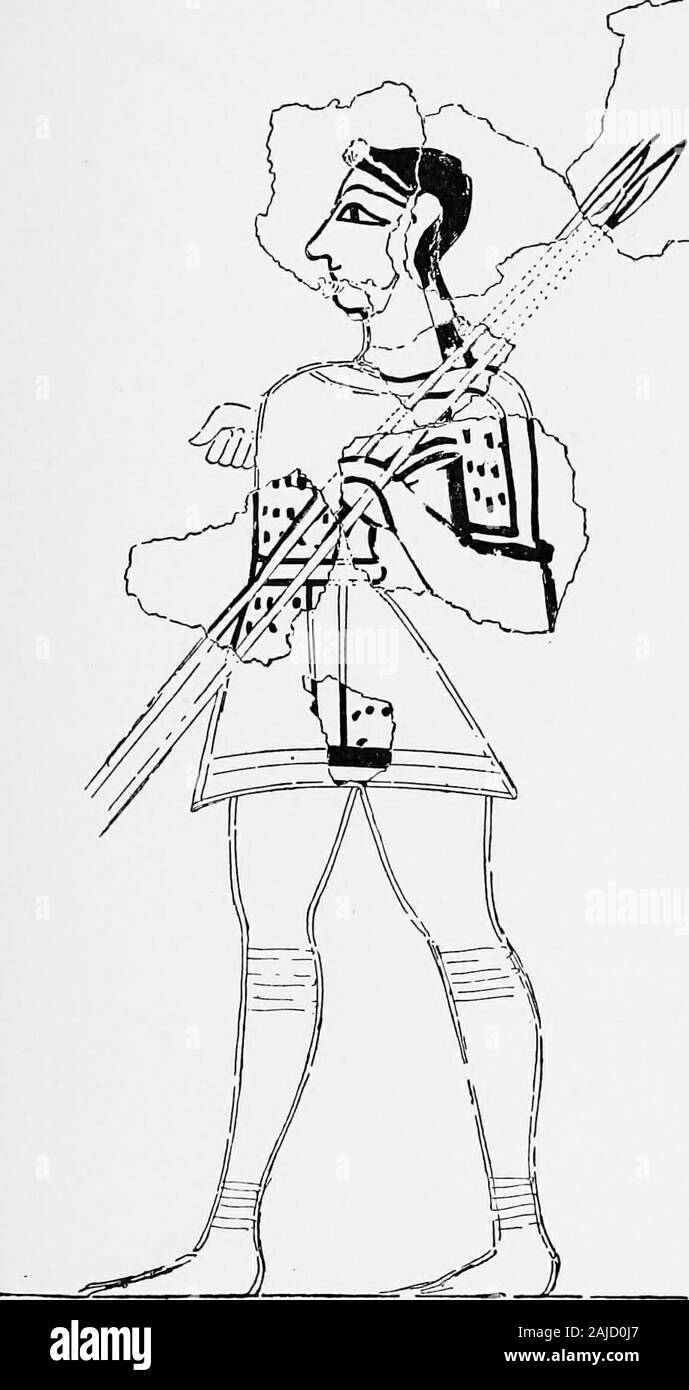Ægean archæeology; an introduction to the archæeology of prehistoric Greece . .—Clay sealing with p , ,, . , repre.entation of two ment, to fit the hgure, m themen in baggy waisiclout Myccuacan representation, is veryor breeches (/3pci/ca» ?); noticcablc ; evidently the Cretan« ajge . icleal of the narrow waist had to be followed by the mainland Mycenaeans. This modern-looking costume was partially adopted in Crete in theThird Late Minoan period, when the Mycenaeanmodification of the Cretan culture had extended tothe islands. We see the waisted overcoat side by sidewith the breeches-like waist

Image details
Contributor:
The Reading Room / Alamy Stock PhotoImage ID:
2AJD0J7File size:
7.1 MB (201.3 KB Compressed download)Releases:
Model - no | Property - noDo I need a release?Dimensions:
1151 x 2171 px | 19.5 x 36.8 cm | 7.7 x 14.5 inches | 150dpiMore information:
This image is a public domain image, which means either that copyright has expired in the image or the copyright holder has waived their copyright. Alamy charges you a fee for access to the high resolution copy of the image.
This image could have imperfections as it’s either historical or reportage.
Ægean archæeology; an introduction to the archæeology of prehistoric Greece . .—Clay sealing with p , , , . , repre.entation of two ment, to fit the hgure, m themen in baggy waisiclout Myccuacan representation, is veryor breeches (/3pci/ca» ?); noticcablc ; evidently the Cretan« ajge . icleal of the narrow waist had to be followed by the mainland Mycenaeans. This modern-looking costume was partially adopted in Crete in theThird Late Minoan period, when the Mycenaeanmodification of the Cretan culture had extended tothe islands. We see the waisted overcoat side by sidewith the breeches-like waistclout on the Hagia Triadasarcophagus (PI. XXVIII). And later on we see Cypriangrandees on the great vases from Enkomi, * wearingthe same sleeved gown. The purely Minoan costumeof Crete seems to have comprised nothing exactly likethis, but we may be sure that an overcoat of some kind 1 This is now known from the newly-discovered Tirynthian frescoes(RoDENWALDT, Tityns, II). ^ Ibid.; and Fig. 74, above. See pp. 175, 190. * Perrot-Chipiez, III, Fig. 526; cf. Fig. 51, above.. Fig. 95.—Fresco (restored) from Tiryns, shewing Mycenaeanmale costume (Late Myc. =L.M.III). 236 AEGEAN ARCHAEOLOGY was worn bv the Cretans on the mountains in cold orwet weather, and there is Httle doubt that it was a stiffcapote of rough hair, standing out from the shoulderslike that of an Albanian or that of a Sphakiote Cretanto-day ; we seem to see this being worn by the commonsoldiers on the Chieftain Vase or by the old villageheadman on the Harvesters Vase from Hagia Triada, ^or by a man on a seal impression from the same place.^In the last two cases it descends to the knees, and has ahanging fringe. The waistcloth also some-times was ornamented with a hangingfringe of a kind of translucent gauze-material or network. It was gaily colouredand ornamented with bands and rosettes.The northen chiton also had coloured bandsand borders. In the Middle Minoan period the cloth-ing of the women was distinguish